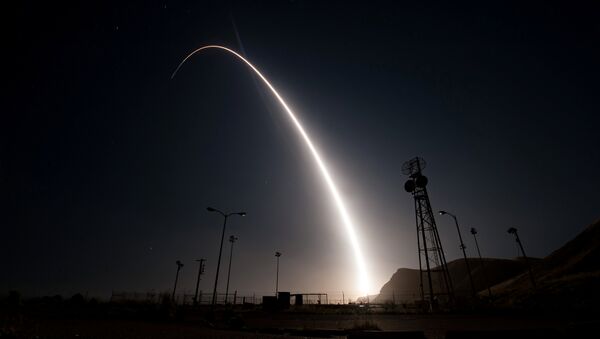In 2016, China Electronics Technology Group Corporation (CETC) announced that it had tested a quantum radar with a range of around 62 miles, or 100 kilometers — roughly five times further than the range of its US and German competitors, Popular Science reported. The next generation of the radar will be capable of tracking ballistic missiles in outer space and aircraft flying at extremely high altitudes, the South China Morning Post reported Friday.
By mounting a quantum radar onto a near-space vehicle, China's air force could "effectively monitor high-speed flying objects in the upper atmosphere and above," CETC said at an industry exhibition in Nanjing, SCMP added.
Xia Linhao of CETC told the Global Times Friday that "quantum radar technology has largely been mature theoretically and has entered the phase of experimental realization."
The quantum system developed by China is meant to track stealthy US aircraft, according to the SCMP story, which said that, "China regards the stealth aircraft flown by the United States and its allies as a major threat to its regional interests and is therefore keen to have an effective countermeasure."
Conventional radars rely on radio waves that reflect off of objects to provide details about an aircraft or submarine's location and speed; a quantum radar, in contrast, takes advantage of entangled photons, or quanta of light. The theoretical mechanism is for one entangled photon to bounce from the object back to the quantum radar, which can extract information about the object's estimated radar cross-section, velocity and position.
The "strange phenomenon" of quantum entanglement was described in an MIT Technology Review report from 2017 as a process that "occurs when two quantum objects, such as photons, form at the same instant and point in space and so share the same existence," adding that, "in technical terms, they are described by the same wave function."
MIT was reporting at the time on another Chinese breakthrough, when researchers successfully teleported a photon from Earth to a satellite orbiting Earth 500 kilometers away in July 2017, the MIT Technology Review. Yes, you read that right. A photon, the elementary particle of light that has zero mass, was teleported from a place on Earth all the way to an extremely sensitive satellite in space.
The Chinese team "created the first satellite-to-ground quantum network, in the process smashing the record for the longest distance over which entanglement has been measured," the MIT Tech Review noted.




